
Arizona is for the birds. Literally. The state has a beautiful diverse ecosystem with close to 600 different bird species to across 3 million acres. Here we’ll look at some of the most common birds of Arizona.
According to Tom Woods of the Southeastern Arizona Bird Observatory, “If you’re one of those birders that wants to see as many birds as possible in the United States, sooner or later you need to come to southeast Arizona because there are birds here that are not found anyplace else.”
For birders, Arizona has an abundance of natural habitats. In Southern Arizona alone, there are five favorite areas to spot local birds.
- Madera Canyon, south of Tucson, has a diverse landscape ranging from Arizona desert to grassland to forest. Here, lucky birders can track down 15 species of hummingbirds, the Elf Owl, and the Elegant Trogon.
- Sweetwater Wetlands is located west of Tucson. The wetlands here draw waterfowls during the cold months. The regular feathered inhabitants of the wetlands are the Greater Roadrunner, Harris Hawk, Cactus Wren, the Ladder-backer Woodpecker, and others.
- The Chiricahua Mountains are in southeastern Arizona with the town of Portal as the focus point. Some of the resident mountain birds are the Red-faced Warbler, Juniper Titmouse, Mexican Chickadee, the Elegant Trogon, and more.
- Patagonia Lake State Patagonia-Sonoita Creek Preserve and the Patagonia Roadside Rest Area are home to the Phainopepla, Vermilion Flycatcher, Gila Woodpecker, Black Phoebe, and Northern Beardless Tyrannulet. The Rest Area is particularly popular with Hummingbirds. Rare birds in the area are the nesting Green Kingfisher and Black-capped Gnatcatcher, and the wintering Rufous-backed Robin.
- Carr Canyon is a birding hotspot for the Buff-breasted Flycatcher, Yellow-eyed Junco, Red-faced Warblers, and Steller’s Jay.
The Greater Phoenix Area is another birding favorite. Birds in the Phoenix area include:
- The Rosy-faced Lovebird.
- The Riparian Preserve at Water Ranch is the place to sight 200 species of birds, including the Gambel’s Quail. The Desert Rivers Audubon hosts bird walks every third Saturday from October through March.
- The Road-Runner roams the Desert Botanical Garden.
- The Rio Salado Habitat Restoration Area by the Salt River has more than 250 types of birds. There are organized birding parties from October through May.
- The Tres Rios Wetlands is home to 150 different bird species, including Osprey, American White Pelicans, ducks, and grebes.
Birding in Verde Valley
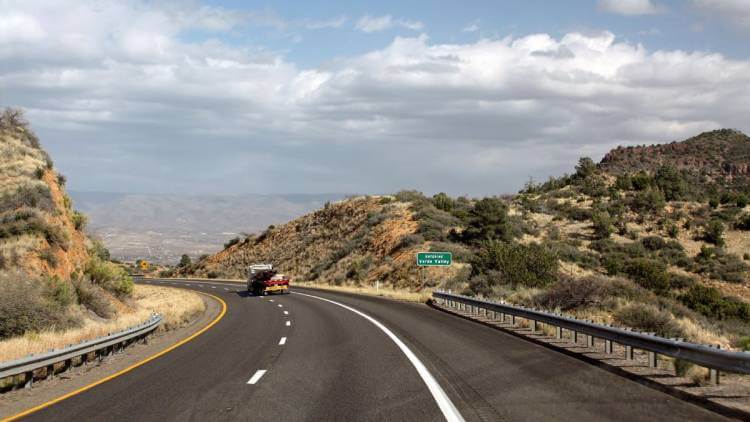
The Verde Valley and its Verde River in Central Arizona provide habitat to 200 bird species, 75 amphibian species, and 90 different types of mammals. The Verde River Watershed is home to the Great Blue Heron, Bald Eagle, Golden Eagle, Kingfishers, Blue Heron, Yellow-billed Cuckoos, Cardinals Egrets, and Tanagers.
Birders can join the traditional Christmas Bird Count each December in Sedona, Jerome, and Camp Verde.
Common birds of Arizona are as follows:
1. American Robin – this bird has a gorgeous red breast, spotted white throat, and a darker head and back. The female is a paler version of the male. These robins live within forested areas, but they also frequent backyards. They feed on snails, worms, and insects.
2. Downy Woodpecker – this is a small woodpecker with a short bill. The Downy Woodpecker has a white front topped with streaked black feathers. The male has a red spot on the rear of his head, which the female does not. They frequent backyards and can be attracted to a bird feeder with suet, peanuts, and sunflower seeds.
3. Hairy Woodpecker – has a black and white body with a long bill. The male has a red dot on his head, while the female does not. The Hairy Woodpecker lives in forests, swamps, orchards, and backyards. All they need is a few trees. The Hairy Woodpecker and the Downy Woodpecker are similar and are frequently confused. The Hairy Woodpecker is larger, with a larger bill, and has a white tail, while the Downy Woodpecker’s tail is spotted.
4. American Goldfinch – the male is a bright yellow with black wings and a black head during the summer, while the female is a duller shade and lacks the black head. Both male and female turn duller in the winter months. American Goldfinches are vegetarians who feed off seeds but never eat any insects.
5. House Sparrow – the male had a black bib and white cheeks on a chestnut-colored face. His back is brown and is streaked with black. The female is a duller shade of brown. The House Sparrow has adapted to life near humans and snaps up left-over foods in parks, amusement parks, and sporting events. They enjoy millet and cracked corn.
6. White-breasted Nuthatch – as the name implies, these birds have white breasts, a gray back, and a long bill. The males have a black cap, while the female is more of a grayish color. They are comfortable in the presence of people and spend time in parks and backyards. Seeds, peanuts, and mealworm will attract them to a birdfeeder.
7. Red-winged Blackbird – the male is entirely black except for a red and yellow dot on the shoulder. Females are brown with some yellow by the bill. They enjoy perching on the top of trees and checking out their territories.
During breeding season, the Red-winged Blackbird can be found in wet areas, such as marshes, where the female builds her nest surrounded by cattails. When they aren’t breeding, they can be found on fields and pastures looking for weedy seeds.
8. European Starling – these birds have a shiny dark and/or black plumage. Its tail is short, and its beak is long. When they breed, their plumage develops a greenish shine. Come wintertime, they lose the shine and grow white spots over the black.
Common Birds of Arizona by Color
Black Birds in Arizona
Great-Tailed Grackle in Arizona
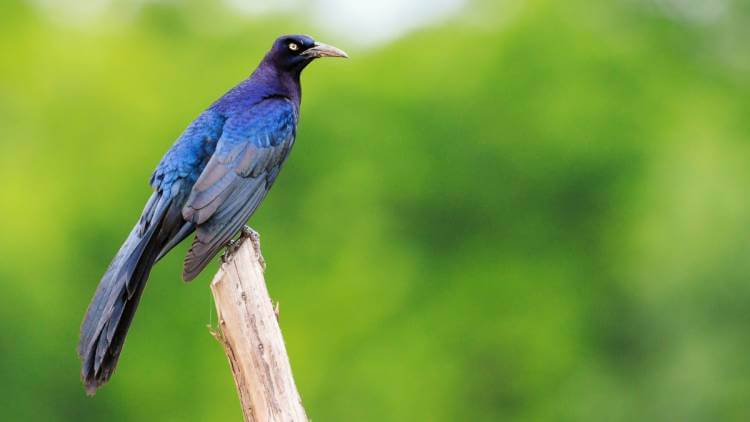
The Great-tailed Grackle is a stout bird with a long, tapered tail the size of the rest of its body with a 23-inch wingspan. The female is only half the size of the male. The male has luminescent black feathers and yellow eyes, while the female is a darker brown. The Great-tailed Grackle is comfortable around people and spends its time on lawns, fields, parks, and golf courses.
They will nest in dense vegetation in wet areas.
Yellow-headed Blackbird in Arizona
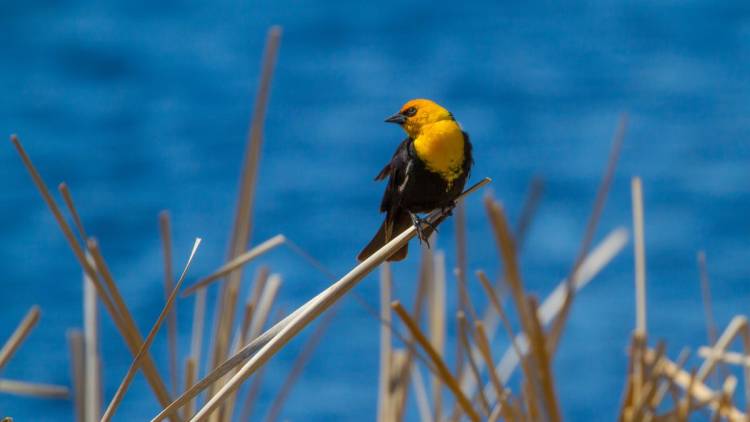
The Yellow-headed Blackbird is a striking black bird with a bright yellow head. They are beautiful to look at but may be the worst songbirds in the U.S. They nest in marshland and spend time in fields. They share space with their Red-winged Blackbird cousins, but the two groups do not get along.
The Yellow-headed Blackbird forages for food in marshes and fields for seeds, or they will snatch up insects, caterpillars, or ants.
Red-winged Blackbird in Arizona

The Red-winged Blackbird has a black body with a bright red/orange spot on top of the wings. The female has brown stretch and can easily be confused with a sparrow. The male has a wingspan of about 15 inches. In Arizona, the Red-winged Blackbird can be found throughout the state, but especially in the Sonoran Desert. They feed on seeds, grain, small fruit, as well as insects.
They nest close to the ground in marshland and can become easy prey to predators.
Like other blackbirds, the Starling is comfortable around human habitats, where it can find plenty of food, such as farms, fields, and open woodland. They need trees in which to nest. The Starling weighs around 3 ounces and has a long wingspan and short, square tail. They are aggressive and will bully other birds from their area, much to the dismay of birders.
During mating season, January through June, Starlings have a yellow bill, which turns darker during the rest of the year.
Blue Birds in Arizona
Eastern Bluebird in Arizona

The Eastern Bluebird is a beautiful color of royal blue with a white and orange underbelly and a cone-shaped bill. As with most birds, the female is a few shades duller. The male can grow up to seven inches in length. They mostly inhabit open spaces such as meadows and fields and feed on beetles and other small bugs. In the winter, their primary food source becomes berries and small fruit. They will visit bird feeders filled with insects and berries.
These Bluebirds can be seen only in Southern Arizona.
Belted Kingfisher in Arizona

The Belted Kingfisher can be found almost anywhere in the U.S., including Arizona. In Arizona’s Maricopa County, they can be found throughout the winter. In an unusual bird-world twist, it is the female who is the colorful one. She is blue across the breast over a brown stripe on her belly. The male lacks the brown stripe. Both have a tuff of spiked blue hair which resembles avian “bed hair.”
They live near ponds and rivers and feed on fish, amphibians, and insects. They will bomb-dive into the water to catch their dinner.
Pinyon Jay in Arizona
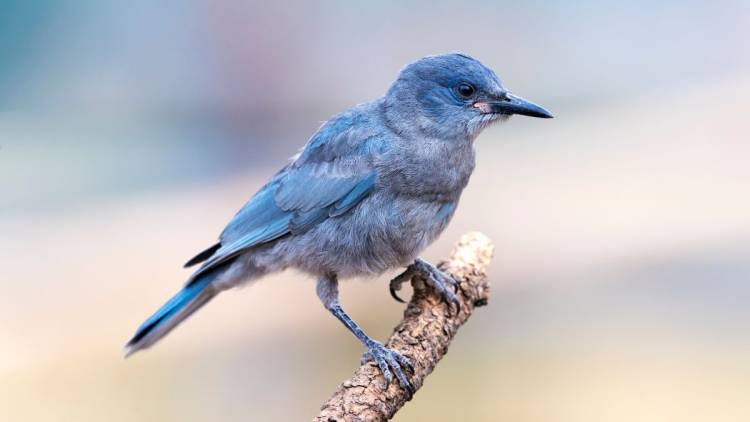
The Pinyon Jay grows up to 11 inches and has a blue body with a light blue belly and throat area. It has a short tail. Male and female Pinyon Jays look alike. They feed on the seed of the pinyon pine, grains, and acorns. They will also eat insects, snakes, and small mammals. They save and bury many thousands of pinyon nuts a year, but never find them all.
To attract the Pinyon Jay to a bird feeder, lay out sunflower seeds, suet, and whole peanuts.
Orange Birds in Arizona
Streak-backed Oriole in Arizona
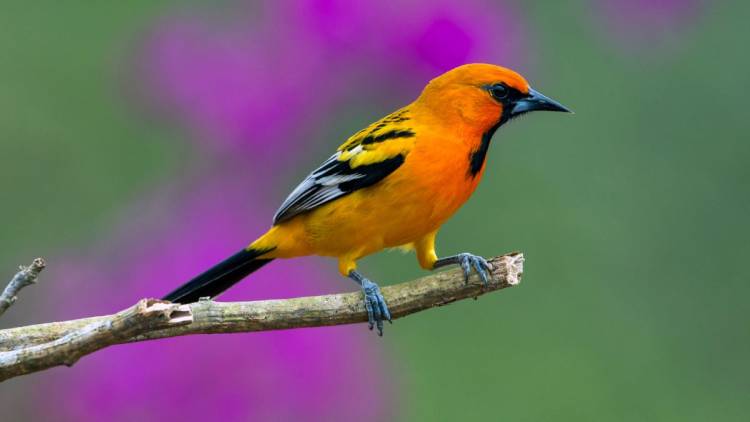
The Streak-backed Oriole has a vivid orange breast, a black face, and black streaks with white bars down its wings. Their tails are black with some white at the corners. They feed mainly on insects, but they also have a sweet tooth and love orange sections and grape jelly.
This bird can be found in southern Arizona livings in scrubs, brushes, and plantations. There are five common Oriole species, and Arizona has three of them.
The male has an eye-catching plumage of orange, black, and white. Even the female has lovely hues of green and yellow. They are slender birds with long tails and sharp bills.
American Redstart in Arizona
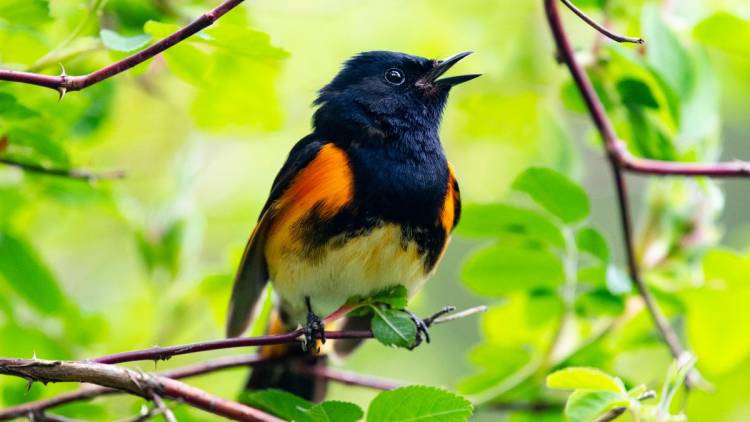
The American Redstart is a warbler with a flat bill and an expressive and elegant tail. The Redstart is a medium-sized bird, between four and a half and five inches in length. Its wingspan can range from 6.3 inches to 7.5 inches.
The male is black with a striking orange patch on the side, wings, and tail. The front is white. The female is more yellow. When they extend their tail, they expose the bright orange and yellow, which makes them easy to find. The American Redstart feeds on insects. They are frequently found near deciduous trees.
Black-headed Grosbeak in Arizona
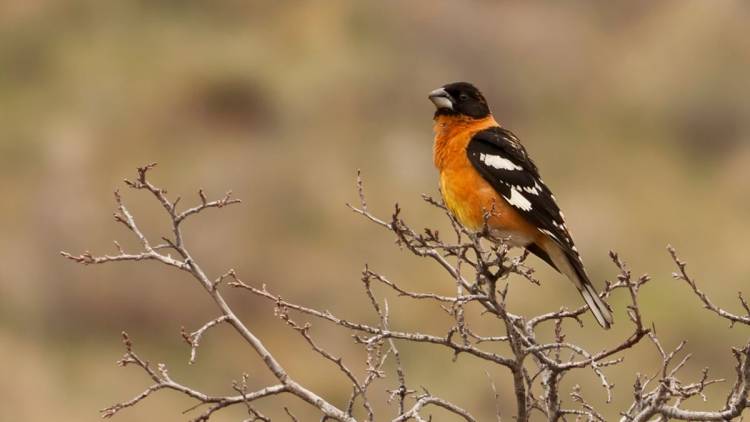
The Black-headed Grosbeak can be found in Arizona’s higher forests, where they breed. They feed on seeds and berries and visit birdfeeders often. They can be most frequently spotted during spring from April through May and in the fall. Birders should visit Mount Ord, Slate Creek Divide, and the Four Peaks Wilderness Area to spot the Black-headed Grosbeak.
The male is an orange color with a black head and black and white wings. The females are grayer, with a yellow underwing area.
Black-headed Grosbeaks like to hide in thick foliage and are known to hop around while searching for food. Their giant beaks are perfectly adapted for cracking seeds, but they also use them to crush hard-bodied invertebrates like snails! They will visit a bird feeder for sunflower seeds and will come to a backyard to drink nectar from flowers.
Common Birds of Arizona by Species
Arizona has a great diversity of bird species, from the deserts to the mountain. The state parks are also a wonderful choice for birders. Explore the Dead Horse Ranch State Park, Red Rock State Park, Lyman Lake State Park, Kartchner Caverns State Park, Patagonia Lake State Park, and Picacho Peak State Park.
Hummingbirds in Arizona
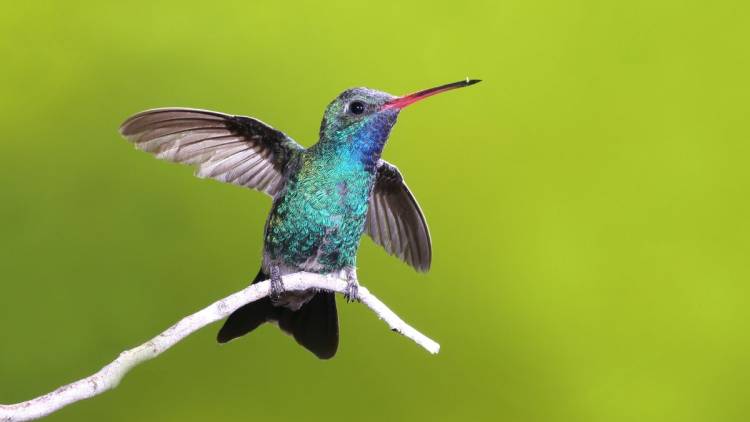
Arizona has several species of beautiful hummingbirds that can be seen at residential hummingbird feeders across the state.
1) The Broad-billed Hummingbird – Cynanthus latirostris – is a bright metallic green with a blue throat and upper breast. The female, as is mostly the case, is less bright. Both the male and female have long, thin, red beaks that get broader toward the face. They range from 3.2 inches to almost 4 inches in length and weigh between 3 and 4.5 grams.
In Arizona, they can be found by canyon streams and are a common sight by bird feeders. They feed on insects and enjoy the nectar from flowers.
These Broad-billed Hummingbirds are migrators and head toward Arizona between March and September.
2) The Anna’s Hummingbird – Calypte anna – is under 4 inches in length, weighs between 3 and 6 grams, and has a wingspan of 4.7 inches. Their beauty is incredible, with their glistening emerald features and shiny pink throat. They can be found in Arizona’s southeastern area, and they also enjoy backyards and parks.
Like many hummingbirds, they drink the nectar of flowers and catch insects. Birders catching the male during courtship will see him dive dramatically as the tail feathers make a loud noise to impress the female.
3) Costa’s Hummingbird – Calypte costae – is a brilliant purple around the neck and crown, with a green back and white front. Females tend to be whiter and less purple. They are very small, only 3.6 inches in length, and they weigh about 2 or 4 grams.
Costa’s live in the desert. In Arizona, they mostly inhabit the southwestern region of the state. Their main sustenance is nectar.
Woodpeckers in Arizona
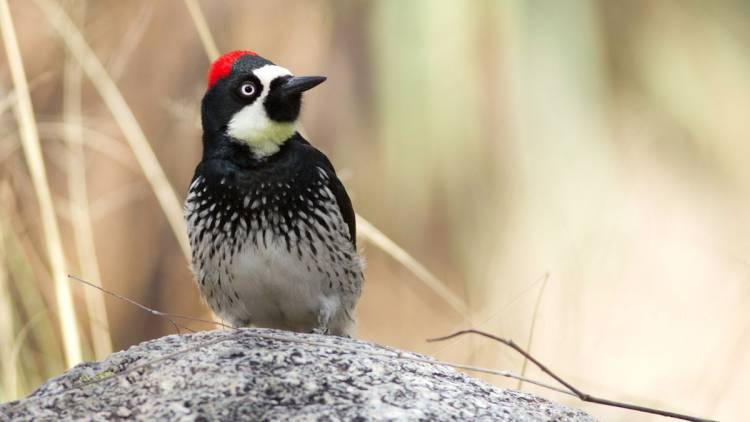
There are 12 different types of woodpeckers in Arizona. To attract woodpeckers to your feeder, offer them suet and sunflower seeds, which they enjoy. Some woodpeckers also eat a healthy diet of grapes, strawberries, apples, and other fruit. Here are some of Arizona’s major woodpeckers.
1) The Acorn Woodpecker – Melanerpes formicivorus – is rare and only resides in the pine forests of Central and East Arizona. They weigh between 2.3 and 3.2 grams and grow 7.5 to 9.1 inches in length. Their wingspan is 13.8 to 16.9 inches. As the name implies, they eat accords and several insects. They have black wings, a white underbelly, and a lovely red cap on their head.
They drill holes in trees to store their accords, sometimes as many as 50,000. They are serious food hoarders.
2) The Red-naped Sapsucker – Sphyrapicus nuchalis- weighs around 1.1 to 2.3 ounces. They grow from 7.5 inches to 8.3 inches in length and have a wingspan of 16.1 and 16.9 inches. During the winter, these sapsuckers live in Southern and Western Arizona while they breed through the state during the spring and summer. Like the Acord Woodpecker, they have black wings, a white/beige underbelly, and a red head and neck.
3) The American Three-Toed Woodpecker – Picoides dorsalis – grows to 8.3 to 9.1 inches in length and weighs in at 1.6 to 2.4 ounces. Its wingspan is 14.6 to 15.3. As the name implies, they are a rare breed of woodpecker with only 3 toes.
This woodpecker is becoming rare, and Arizona is one of the few places it can still be seen, mostly in Central Arizona during the winter. They like to live in old forests with dead trees, from which they can easily get the insect larvae they like to eat.
Falcons in Arizona

Falcons are raptors – the predators of the aviary world. It is difficult to think of these birds as dangerous when some are incredibly beautiful. Below are some of the important falcons in Arizona:
The Peregrine Falcon – Falco peregrinus – is common throughout Arizona and quite comfortable in a busy places such as Phoenix, where they have a nesting box at the Maricopa County Administration Building. They are probably the fastest bird on earth, capable of dive-bombing 200 mph from a height of 3,000 feet.
These raptors feed on other, weaker birds, including ducks and pigeons. They haunt bats, as well. Their broad chest is heavily barred in black and white. They grow 13 to 23 inches in length and weigh 12 to 53 ounces. Their wingspan is between 29 and 47 inches.
The American Kestrel – Falco sparverius – are the smallest falcon, but they are very accomplished predators. The Kestrel grows to 8 to 10 inches in length and used to be known as the sparrow hawk because of its diminutive size. They weigh between 2.8 and 5.8 ounces and have a wingspan of 20 to 24 inches. They just need a few trees and live in parks grassland, and deserts.
The male has a blue head and wings with a rusty back and tail. The female also has rusty wings, back, and tail.
Aplomado Falcon – Falco femoralis – is becoming rarer due to disappearing habitats. This falcon has a grayish back plumage with a streaked orange belly. Its face sports a black mustache with dark stripes around the eyes and white eyebrows. They grow between 14 and 18 inches in length and weigh between 6 and 14 ounces. Their wingspan ranges from 30 to 36 inches.
They feed on insects, birds, and small mammals and will frequently hunt their prey in pairs.
More Information
More information on Arizona birds can be found at Wild at Heart Raptors. They provide help with raptor birds in the state. East Valley Wildlife has great information on Arizona songbirds.
Arizona birders would be wise to sign up for rare bird alerts from the Tucson Audubon. Residents of Maricopa County in particular might like the website Birder from Maricopa.
Lastly, there are a few quality Arizona birding books available for more thorough information on the species inhabiting the state.
- Tekiela, Stan (Author)
- English (Publication Language)
- Alderfer, Jonathan (Author)
- English (Publication Language)



